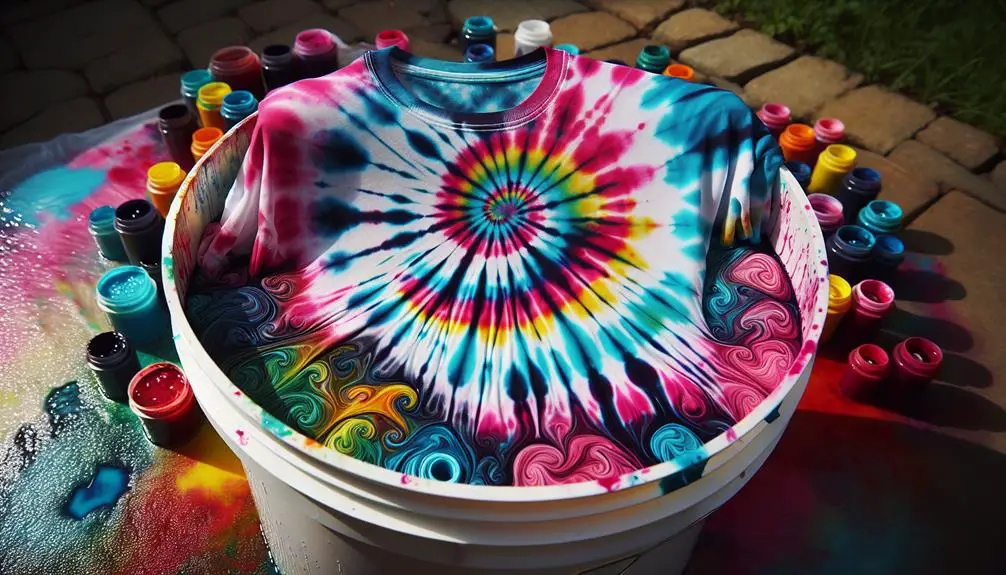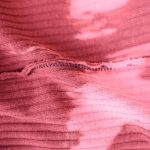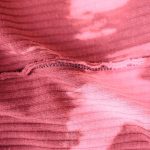Imagine pigment dye as the artist's brush, gently skimming the surface of fabric to create a unique masterpiece.
But what truly sets this dye apart from the rest?
Stay tuned to uncover the secrets behind pigment dye and its fascinating journey from its natural origins to becoming a go-to choice for achieving that sought-after vintage look in the fashion industry.
Table of Contents
Key Takeaways
- Pigment dye forms a surface film for a gradual, lived-in look.
- Application methods include fabric paint-like techniques for softness.
- Color fastness properties ensure vibrant hues endure washes and sunlight.
- Pigment dye is popular in fashion for vintage aesthetics and unique color options.
Characteristics of Pigment Dye
Exploring the characteristics of pigment dye reveals its unique surface-sitting nature, distinguishing it from traditional penetrating dyes. Pigment dyeing involves applying color to the fabric's surface, creating a distinctive weathered and vintage appearance. Unlike traditional dyes that penetrate the fibers, pigment dye stays on the fabric's exterior, forming a colored film. To guarantee the color lasts, a binder is applied to help the dye adhere to the fabric effectively. The charm of pigment-dyed apparel lies in how the color fades gradually over time, enhancing the garment's lived-in look.
This unique dyeing process isn't only aesthetically pleasing but also a cost-effective method compared to other dyeing techniques, making it a popular choice for creating trendy, vintage-style clothing. The binder application in pigment dyeing plays a vital role in giving garments their characteristic weathered appearance. Understanding these aspects of pigment dye provides insight into how this method achieves its distinct visual effects while offering a practical and economical solution for creating fashion pieces with enduring style.
Application Methods of Pigment Dye
Having understood the unique characteristics of pigment dye, the application methods play a pivotal role in achieving the desired weathered appearance on fabric surfaces.
When it comes to applying pigment dye, the fabric paint-like method is commonly used, making it suitable for garment dyeing post-cutting and sewing. Unlike traditional dyes, pigment dye sits on the fabric's surface rather than penetrating it, resulting in a distinctive weathered look that adds character to the material.
To guarantee the pigment adheres well to the fabric and maintains its color over time, a binder is essential in the dye mixture. This method not only offers a cost-effective solution due to the use of primarily synthetic dyes but also provides a softer feel to the fabric, enhancing its overall appeal.
Over time, the colors subtly fade with washing, contributing to a lived-in aesthetic that's highly sought after in modern fashion trends.
Advantages of Pigment Dye
Pigment dye imparts a trendy vintage appearance to apparel, making it a popular choice among various brands seeking a unique lived-in aesthetic. One of the significant advantages of using pigment dye is its relatively low cost compared to other dyeing techniques. This affordability allows brands to achieve the desired vintage look without breaking the bank.
Additionally, the color fading characteristic of pigment dye adds to the charm of the garment, enhancing its vintage appeal over time. Another advantage is the wide range of colors available with pigment dye, providing brands with ample options for customization to suit their unique aesthetic preferences.
The trendiness of pigment-dyed apparel has made it a popular choice in the fashion industry, where consumers appreciate the individuality and character that garment-dyed pieces bring to their wardrobes.
Pigment Dye in Textiles/Fashion
I'll talk about how pigment dye is used in garments and its color fastness properties.
Pigment dye is popular in fashion for its ability to create a vintage aesthetic. Understanding how it interacts with textiles can help in appreciating the unique qualities it brings to clothing.
Use in Garments
In the domain of fashion and textiles, pigment dye transforms garments by adding pigments to fabric, creating a vintage, lived-in aesthetic without penetrating the fibers. When considering the use of pigment dye in garments, it's important to understand the following:
- Binder Requirement: Pigment dye necessitates a binder to adhere to the fabric surface.
- Trendy Aesthetic: Pigment-dyed apparel offers a trendy look with colors that naturally fade over time.
- Brands: Companies like Authentic Pigment and Threadfast Apparel are renowned for their pigment-dyed clothing in various color options.
- Color Care: Proper care is important for pigment-dyed garments to maintain color intensity, including washing with like colors and using gentle detergents.
- Vintage Appeal: Colors fading over time enhance the vintage charm of pigment-dyed clothing.
Color Fastness Properties
When looking at the color fastness properties of pigment dye in textiles and fashion, one immediately notices its remarkable ability to maintain vibrant hues over time. Pigment dye binds tightly to fabric fibers, ensuring long-lasting and durable color that resists fading.
Textiles dyed with pigment dye exhibit excellent fading resistance, preserving color integrity through multiple washes and exposure to sunlight. This dyeing method guarantees that the vibrant colors of apparel remain true to their original shade for an extended period.
The color fastness of pigment dye makes it a preferred choice for creating textiles and garments that require vivid, lasting hues, providing a reliable option for those seeking enduring and vibrant color solutions in fashion.
Differences From Traditional Dyes
Pigment dye distinguishes itself from traditional dyes by sitting on the surface of fabric fibers instead of penetrating them. This unique characteristic results in a variety of differences between pigment dye and traditional dye types:
- Binder Requirement: Pigment dye requires a binder to adhere to the fabric surface, creating a distinctive appearance.
- Color Fading: Unlike traditional dyes, the color from pigment dye gradually fades over washes, imparting a lived-in look to the fabric.
- Post-Production Process: Pigment dyeing is a post-production process that alters the fabric's color, unlike traditional dyeing methods.
- Vintage Aesthetic: Pigment dyeing offers a weathered and vintage aesthetic that's highly sought after in modern apparel.
- Fabric Surface Impact: Traditional dyes penetrate the fabric fibers, while pigment dye stays on the surface, affecting the overall texture and feel of the fabric.
Pigment Dye Vs Other Dye Types
Comparing pigment dye with other dye types reveals distinct differences in their application and appearance on fabric fibers. Pigment dye, sitting on top of fibers, creates a weathered look, unlike traditional dyeing methods such as garment dyeing, which penetrate for richer, more vibrant colors and uniform saturation.
While pigment dye provides a lived-in aesthetic due to its tendency to fade over time, it offers a soft and stylish appeal, particularly popular for synthetic materials in modern fashion. Garment dyeing, though slightly pricier, delivers consistent results without the weathered appearance or fading characteristic of pigment dye.
The choice between pigment dye and other dye types depends on the desired outcome: a vibrant and uniform look (traditional dyeing) or a softer, weathered appearance that evolves over time (pigment dye). Each method has its place in the industry, catering to different preferences and styles.
Impact of Pigment Dye in Industry
I'll explore how pigment dye revolutionizes industry applications.
It considers its environmental implications.
It also analyzes current market trends.
Industry Applications of Pigment Dye
In the textile industry, the impact of pigment dye is significant due to its versatile applications and unique color effects on fabrics and garments.
- Pigment dye is favored for its vintage aesthetic, creating a worn-in look on apparel items.
- This dye sits on the fabric surface, resulting in unique color variations.
- Industry applications benefit from the cost-effectiveness and wide range of color options.
- Pigment dye is known for fading over time, enhancing the vintage appeal of clothing.
- It offers softness and comfort, making it ideal for pigment-dyed sweatshirts and custom apparel.
Environmental Implications of Pigment Dye
Exploring the environmental implications of pigment dye in the textile industry reveals significant concerns regarding its impact on ecosystems and human health due to the use of synthetic pigments containing heavy metals and toxic substances.
Pigment dyeing processes contribute to water pollution and waste generation, with some dyes posing risks due to their chemical composition. Proper disposal of pigment dye waste is essential to prevent environmental contamination.
To address these challenges, the industry is exploring sustainable practices and eco-friendly alternatives to reduce the environmental footprint associated with pigment dyeing. Implementing these changes is vital to mitigate the negative effects of synthetic pigments on the environment and human well-being, promoting a more sustainable approach to dyeing processes.
Market Trends for Pigment Dye
The growing demand for pigment dye in the apparel industry reflects a shift towards personalized and characterful clothing options, driven by its vintage aesthetic and unique color variations.
- Pigment dye is a cost-effective way to achieve a weathered charm in garments.
- Brands are responding to the growing demand for individualized style by incorporating pigment-dyed apparel into their collections.
- Consumers are drawn to the lived-in appearance offered by pigment dye, seeking a distinct look.
- The market trend for pigment dye signifies a preference for more personalized and characterful clothing options.
- Pigment dye's unique color variations contribute to its appeal in creating a vintage aesthetic.
Frequently Asked Questions
What Is the Difference Between Pigment Dyed and Garment Dye?
The difference between pigment dyed and garment dye lies in how they interact with fabric. Garment dye penetrates for vibrant colors inside out, while pigment dye sits on the surface, creating a vintage look that may fade over time.
What Are the Benefits of Pigment Dye?
The benefits of pigment dye include a trendy, vintage appearance, low cost, and faded color over time for a unique aesthetic. Many popular brands offer a variety of pigment-dyed products in different colors, appealing to consumers.
Will Pigment Dye Fade?
Yes, pigment dye will fade over time with repeated washings. It adds to the vintage look of the clothing. Proper care like washing in cold water helps maintain color intensity. Fading is a natural part of pigment dyeing.
What Does Pigment Dyed Hoodie Mean?
Wearing a pigment-dyed hoodie means embracing a unique style. The dye is applied post-construction, sitting on the fabric's surface to create a vintage appearance. Over time, the color may fade, but it enhances the garment's individuality.
- Tetron Fabric for Marine Applications: Durability and Use Cases - June 18, 2025
- Tetron Fabric for Outdoor Furniture: Weather Resistance and Care - June 18, 2025
- Tetron Fabric for Wall Coverings: Style and Application Tips - June 18, 2025





